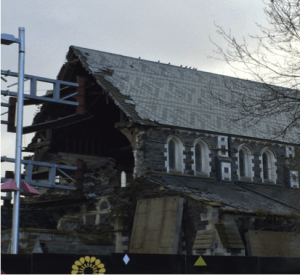A group of six IRDR members visit the Fukushima Prefecture
By ucfbtag, on 6 April 2016
From the 8th to the 15th March 2016, a group of students and researchers from UCL and the UCL Academy visited the area affected by the Fukushima- Daiichi nuclear power plant accident in the Fukushima Prefecture, Japan. The group included six members of the Institute for Risk and Disaster Reduction: four PhD students – Nurmala Nurdin, Omar Velazquez, Serena Tagliacozzo and Zoë Mildon – one Masters  student – Sandra Camacho Otero – and Professor David Alexander. The visit occurred on the occasion of the fifth anniversary of the Great Tohoku earthquake and of the resulting tsunami and nuclear accident.
student – Sandra Camacho Otero – and Professor David Alexander. The visit occurred on the occasion of the fifth anniversary of the Great Tohoku earthquake and of the resulting tsunami and nuclear accident.
The visit was aimed at investigating the current state of rebuilding in the Fukushima Prefecture and highlighting the positive and negative aspects of the reconstruction process. During the course of the stay, we had the chance to see numerous places, being informed about strategies put in place to ensure food security and listen to how survivors coped with the disaster. On the 12th of March a group was allowed to access to the power plant itself while others visited some temporary housing sites in the prefecture.
“Visiting Fukushima was an incredible experience. I think all of us were impressed by the efforts made by the community and the government in order to recover from the disaster. Personally, I was amazed by the reconstruction works carried out in the power plant and the current situation of its facilities”, Omar Velazquez, IRDR PhD student.
Broadly speaking, the Fukushima Prefecture and Japanese Government r esponded well to the disaster: the areas we had the chance to visit were entirely reconstructed in a culturally appropriate manner and information was released to the residents about radiation levels. As additional positive elements, temporary houses were constructed close to or within existing towns and efforts were made to ensure that residents could be both integrated into the new community and maintain relationships with the original one. Much work has been done to ensure control over the safety of the fishery and agricultural goods.
esponded well to the disaster: the areas we had the chance to visit were entirely reconstructed in a culturally appropriate manner and information was released to the residents about radiation levels. As additional positive elements, temporary houses were constructed close to or within existing towns and efforts were made to ensure that residents could be both integrated into the new community and maintain relationships with the original one. Much work has been done to ensure control over the safety of the fishery and agricultural goods.
“Visiting the Fukushima Prefecture gave me the chance not only visit the nuclear plant itself and see the technical efforts to decontaminate the area, but also gave me the opportunity to talk to people and know the local effort to revitalize the place, sell their products and build resilience in situ.” Sandra Camacho Otero, IRDR Master student.
However it should be noted that little chance was given to us to explore the pitfalls of this fast-paced reconstruction. Fukushima prefecture is trying hard to rebuild its reputation as a safe place and to revitalise economic sectors like agriculture and tourism while also investing on robotics and sustainable energy sources. As disaster researchers, it’s crucial for us to highlight both best practices and areas of improvement in order to support decision makers in the hard task of rebuilding after such major disasters. Acknowledging challenges is the first step towards a recovery that attempts to reduce vulnerabilities rather than repeating the mistakes of the past.
Masters student, Sandra Camacho Otero, wrote an article (in Spanish) for The Mexican Times on the field trip in Fukushima. Read more here: http://themexicantimes.mx/a-cinco-anos-de-fukushima/
 Close
Close






